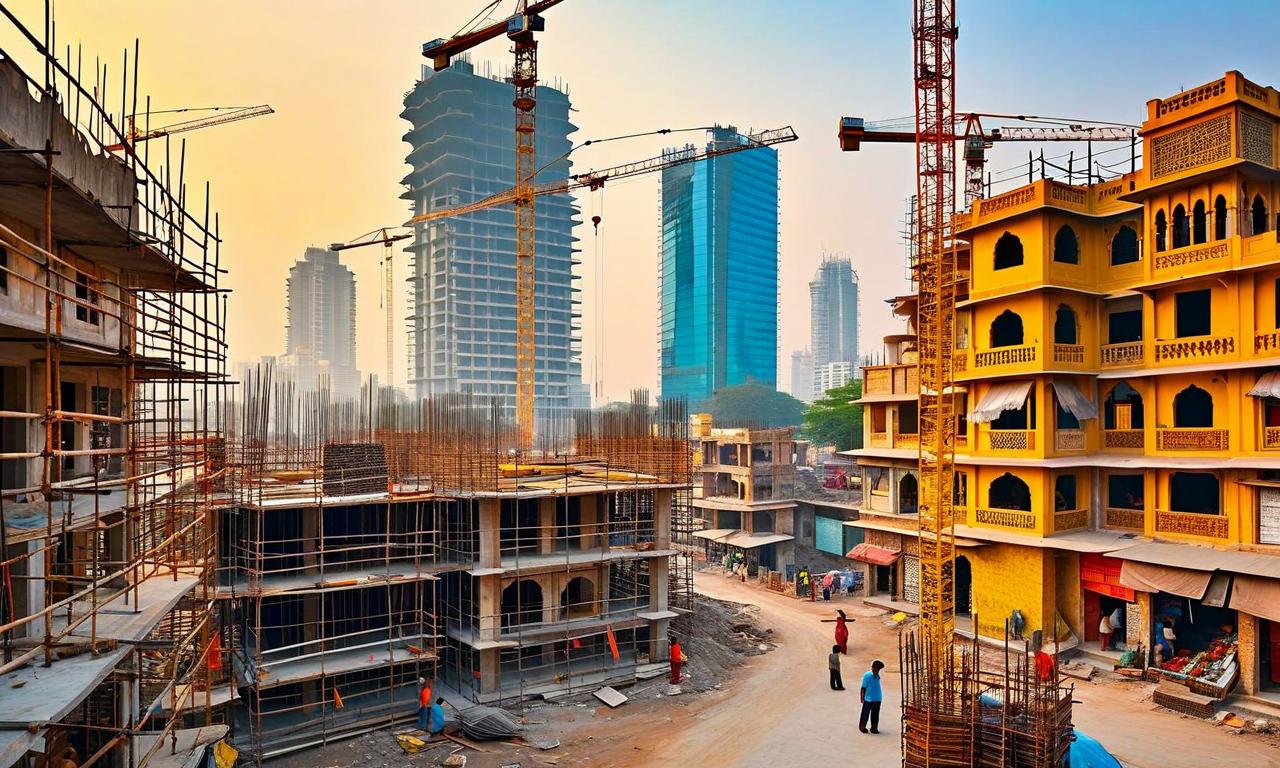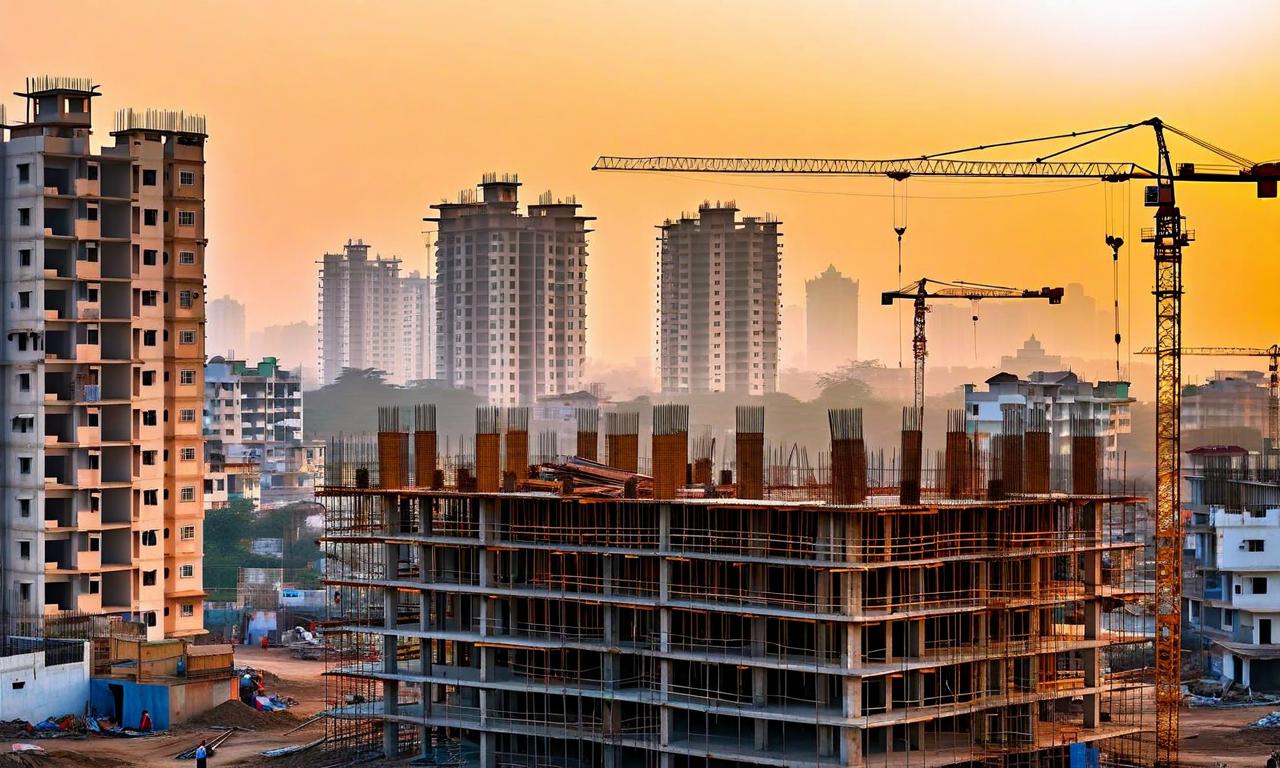Indian Real Estate Sector Hits 7-Year Fundraising High of Rs 23,080 Crore
The Indian real estate sector raised Rs 23,080 crore through 12 deals, marking a seven-year high. Since FY18, the sector has mobilized Rs 72,331 crore, with REITs leading at Rs 31,241 crore. Small-cap stocks outperformed since March 2021, while REITs showed the best 12-month returns at 21.3%. Large, mid, and small-cap stocks recorded negative returns in the past year, indicating a shift towards more stable investments.

*this image is generated using AI for illustrative purposes only.
The Indian real estate sector has demonstrated remarkable resilience and investor confidence, achieving its highest fundraising level in seven years. A comprehensive analysis of the sector's performance reveals significant trends in capital mobilization and stock market returns across various segments.
Record-Breaking Fundraising
The real estate sector in India has raised an impressive Rs 23,080 crore through 12 deals, marking a seven-year high in fundraising efforts. This achievement underscores the sector's ability to attract substantial capital despite market fluctuations.
Cumulative Fundraising Since FY18
Since the fiscal year 2018, the real estate sector has mobilized a total of Rs 72,331 crore. The distribution of this capital across different segments of the market provides insights into investor preferences and market dynamics:
| Segment | Amount Raised (in Rs Crore) |
|---|---|
| REITs | 31,241 |
| Large-cap firms | 20,437 |
| Mid-cap companies | 12,496 |
| Small-cap players | 8,156 |
Stock Performance Analysis
The performance of real estate stocks across different market capitalizations has shown interesting trends:
Small-cap Outperformance: Since March 2021, small-cap real estate stocks have outperformed all other categories, indicating increased investor interest in potentially high-growth, smaller companies.
Mid-cap Momentum: Following small-caps, mid-cap stocks have shown strong performance, suggesting a balanced approach by investors seeking growth with moderate risk.
Large-cap and REIT Lag: Large-cap stocks and REITs have underperformed compared to their smaller counterparts during this period, possibly due to their perceived stability and lower growth potential.
Recent 12-Month Performance
The most recent 12-month period has seen a shift in performance dynamics:
| Category | 12-Month Returns |
|---|---|
| REITs | +21.3% |
| Large-cap stocks | Negative |
| Mid-cap stocks | Negative |
| Small-cap stocks | Negative |
REITs have emerged as the best-performing asset class with a robust 21.3% return, while stocks across all capitalizations recorded negative returns.
Market Implications
The contrasting performance between the longer-term trend and the recent 12-month period suggests a nuanced investor approach:
Long-term Growth Focus: The overall strong fundraising and historical performance of small and mid-cap stocks indicate investor confidence in the sector's growth potential.
Short-term Stability Preference: The recent outperformance of REITs suggests a shift towards more stable, income-generating real estate investments in the face of market volatility.
Evolving Investment Strategies: Investors appear to be balancing their portfolios between growth-oriented stocks and more stable REIT investments, adapting to changing market conditions.
The Indian real estate sector's ability to raise significant capital, coupled with the diverse performance across different segments, reflects a maturing market with opportunities for various investment strategies. As the sector continues to evolve, investors may need to maintain a balanced approach, considering both growth potential and stability in their real estate investment decisions.






































